Maps and Listings
In contrast to the northern coast of Hong Kong Island, which has changed almost beyond recognition in recent times with successive land-reclamation projects, the rocky southern shoreline remains more or less as nature intended. There are four country parks here, along with 290,000 or so residents, some of whom live in the most sought-after real estate in the SAR. With its lush vegetation and sweeping views of the South China Sea and outlying islands, this is the easiest place to escape the heavily urbanised strip on the other side of the mountains. Ocean Park’s pandas, dolphins and hair-raising rides are a major draw, while elsewhere there are some good beaches, challenging walks and pleasant villages to discover.
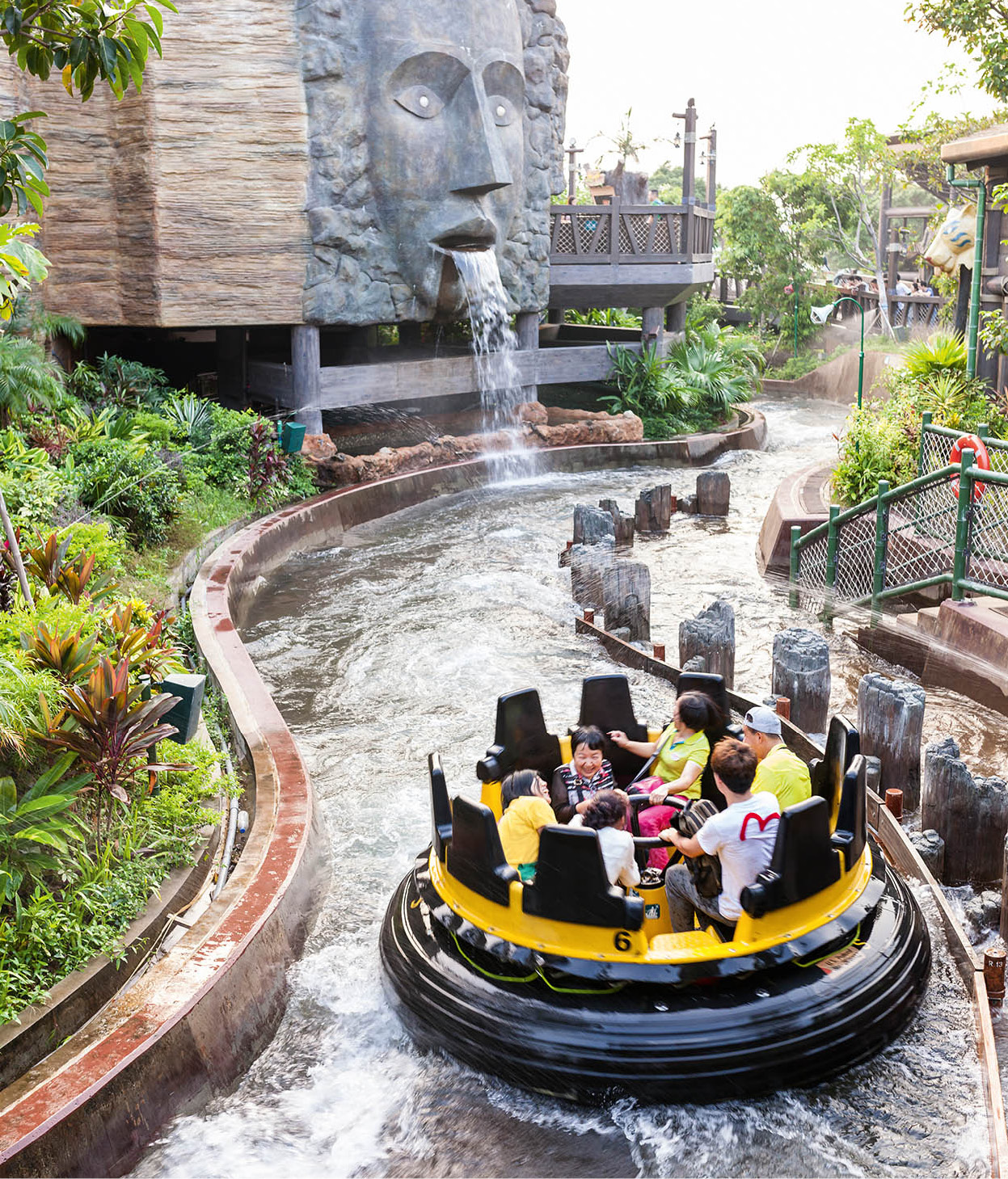
Fun for the whole family at Ocean Park.
Ming Tang-Evans/Apa Publications
Tip
Buses from Exchange Square, Central, to the southern parts of Hong Kong Island include: no. 70, the main route to Aberdeen, and nos. 66 and 260, which run to Stanley and Repulse Bay. For Ocean Park, take nos. 629 or 629A (express service) from the Admiralty MTR station; Shek O is best accessed by taking no. 9 from the Shau Kei Wan MTR.
The harbour town of Aberdeen (Heung Gong Tsai) 1 [map] is the only place on the south coast with an urban feel. It can be reached by road from Kennedy Town through the residential district of Pok Fu Lam and past the new Cyberport development, although most visitors take a more direct route south from Wan Chai through the Aberdeen Tunnel along Stubbs Road and Magazine Gap Road.
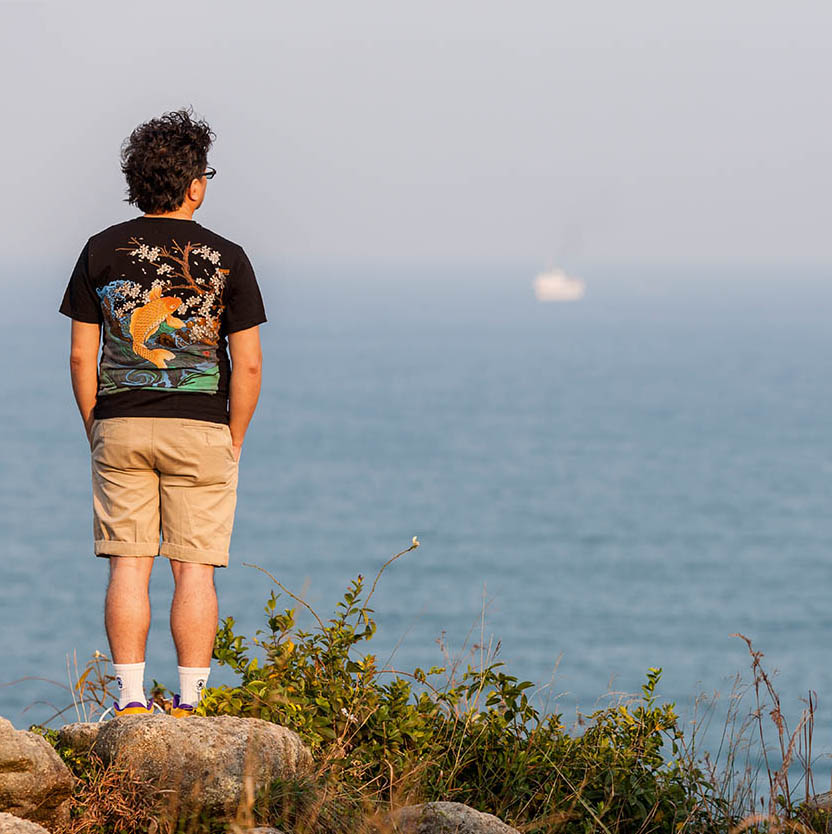
Watching the sun set at Shek O.
Ming Tang-Evans/Apa Publications
Named after the earl who was Secretary of State for the Colonies in 1848, Aberdeen is chiefly notable for the huge numbers of vessels bobbing in the water along its shoreline, and the over-the-top Jumbo Kingdom’s floating restaurants (for more information, click here). No longer a fishing village, the main town is now all high-rises and concrete, but the natural typhoon shelter is packed with boats of all kinds, from wooden fishing boats and kaidos (small cargo boats) to ferries, junks, sampans and yachts. A floating population of around 20,000 people once lived in boats in Aberdeen harbour, but today most of their descendants have opted for re-settlement in high-rise accommodation on dry land. With fish stocks down 80 percent since the 1950s, Hong Kong’s fishing industry is in decline, hard hit by overfishing and pollution. While a few people are living in relative luxury on modern junks in the harbour, most of Hong Kong’s “boat people” are from two main ethnic groups: the Tanka (literally, the egg people, so called because they used to pay taxes with eggs rather than cash) and the Hoklo, originally from Fujian province.
A ride through the harbour is an interesting experience. Eager sampan drivers, often persistent elderly women, are usually on the lookout for tourists and will offer rides (you will probably have to bargain for a price: HK$60–80 for 20 minutes is about right). Alternatively, look out for the Jumbo signs on the harbourfront, and you can hop on the free shuttle boat for a five-minute ride to the flamboyant floating restaurants. Opposite the Jumbo, the sleek white yachts are owned by members of the Aberdeen Marina Club, which is one of the most exclusive and expensive private clubs in the SAR. This area is also home to some of Hong Kong’s last boat-builders and repairers.
Jumbo dining
Opened in 1976, the irresistibly kitsch Jumbo Floating Restaurant has been part of the Aberdeen scenery for decades. The Jumbo seats more than 4,000 diners and is one of the world’s largest floating restaurants. The dragons that greet you at the entrance are even gaudier and the fairy lights that mark out every curve and line of the vessel even brighter after a multi-million dollar refurbishment in 2007. Amalgamated with the smaller and slightly less palatial Tai Pak Floating Restaurant, “Jumbo Kingdom” is self-declared “theme park on the sea” and a magnate for camera-toting tourists.
There is a free shuttle from two clearly marked piers on the Aberdeen waterfront. Hop on and take a look around the well-stocked fish tanks and the tea shop. The food in the indoor restaurants has improved in recent years, but isn’t the best in Hong Kong. That said, the former rooftop storage area has been converted to a bar restaurant, The Top Deck at the Jumbo, and is a great place for a drink or a light meal, with outdoor seating and panoramic views across the harbour sampans and luxury cruisers in the typhoon shelter.
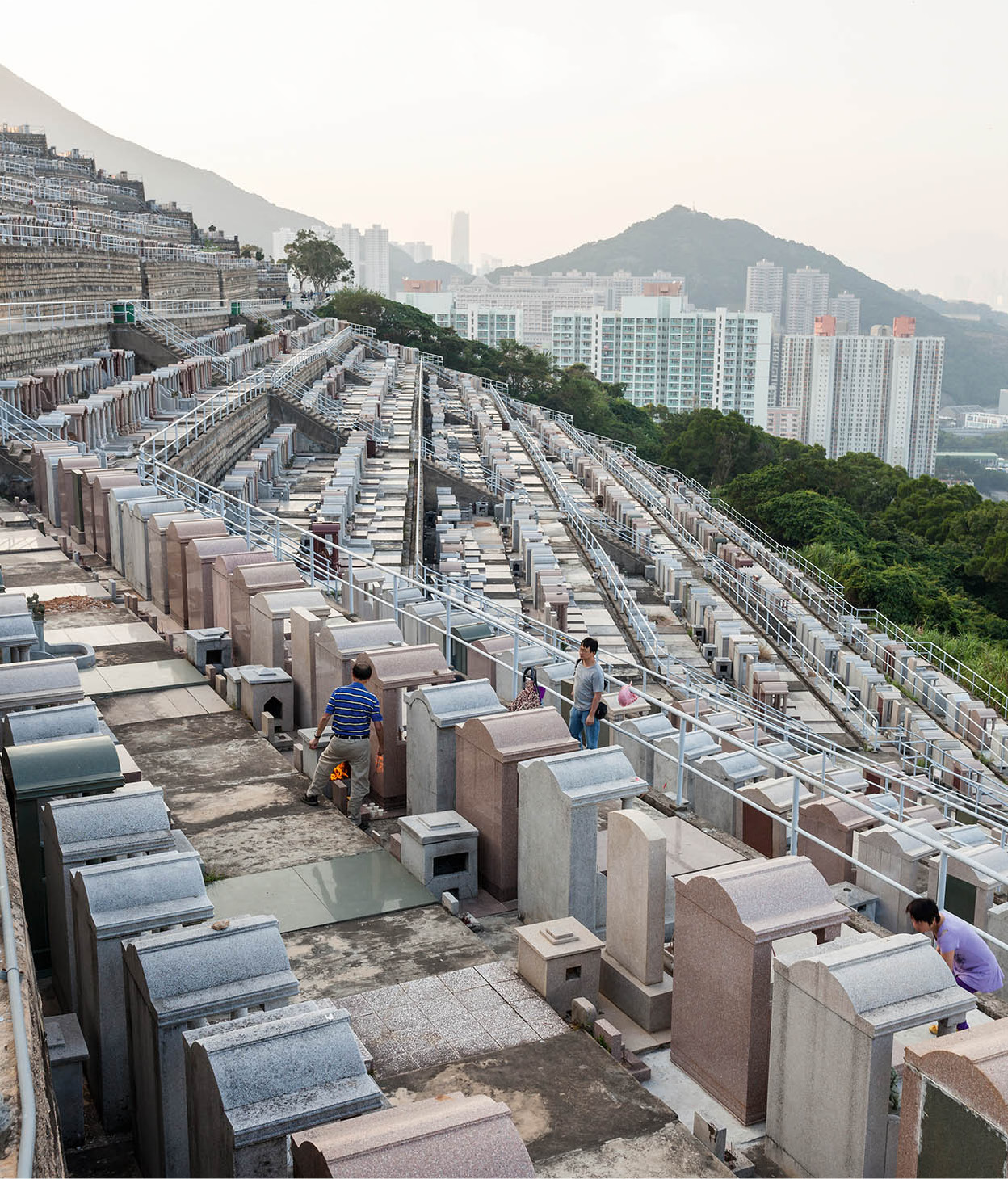
Aberdeen Chinese Permanent Cemetery.
Ming Tang-Evans/Apa publications
Tin Hau Temple
Back on dry land, the Tin Hau Temple on Aberdeen Main Road is rather shabby for most of the year, but comes alive during the Tin Hau Festival in April or May, when thousands of boats converge on Aberdeen’s shores and the temple is decorated with paper shrines and lanterns. Lion dances are performed outside – an event that’s charged with atmosphere and highly photogenic.
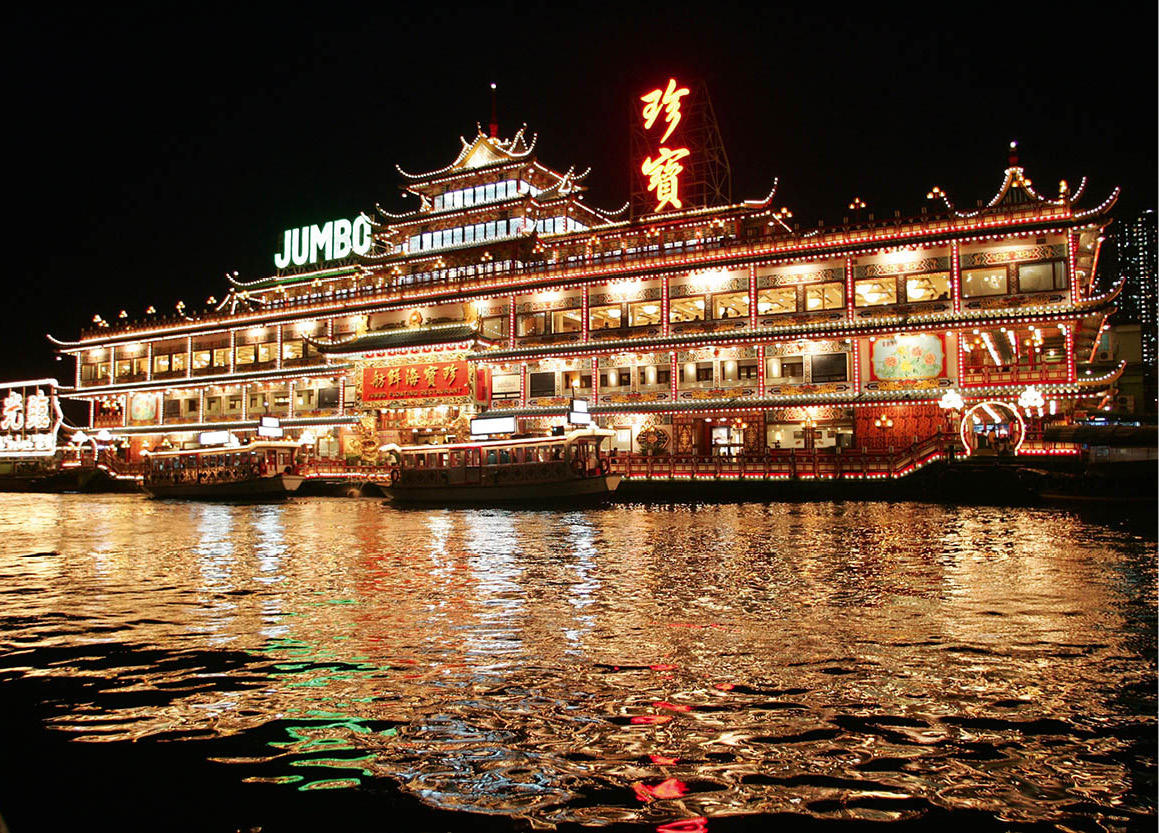
The many sparkling lights on the Jumbo Floating Restaurant illuminate the Aberdeen Harbour by night.
HKTB
Along the promenade
The Aberdeen promenade has been brightened up in recent years and now features plaques telling the story of the town and the boat-dwellers. At its western end, the Aberdeen Wholesale Fish Market is at its busiest in the morning, when customers turn up to select and collect the best produce for seafood-loving Hong Kong diners.
Up on the steep hillside above the fish market is the quaintly named Chinese Permanent Cemetery, entered through a pagoda-style gate. From the cemetery there is an excellent view across Aberdeen; higher still is the starting point for various hikes in the Aberdeen Country Park.
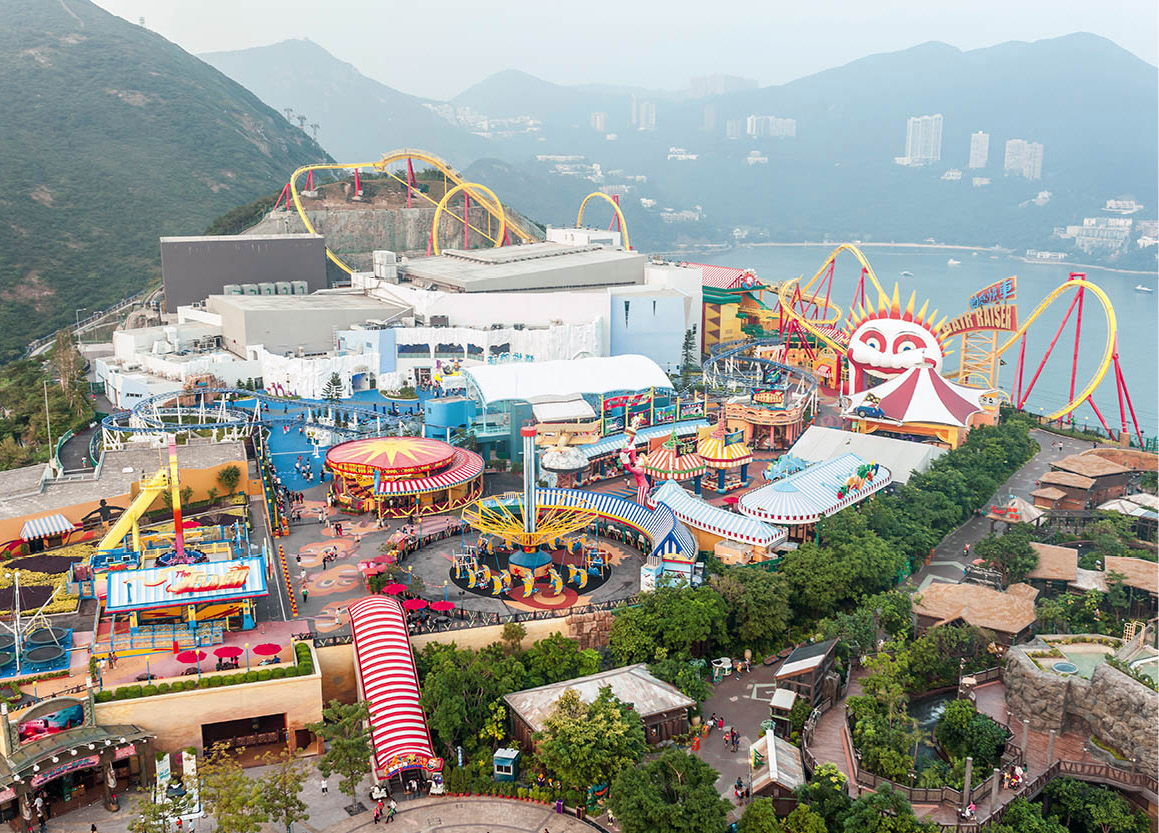
A combination of theme park and oceanarium, Ocean Park is one of Hong Kong’s biggest attractions.
Ming Tang-Evans/Apa Publications
The shoreline around the Aberdeen Typhoon Shelter that connects the town’s waterfront with nearby Ocean Park is being gradually spruced up and now includes a short promenade in the western section. This is expected to be expanded in the years ahead. By 2015 the new South Island MTR line should reach this area.
Further west along the coast is the controversial Cyberport development, which has struggled in meeting its original ambition to become Hong Kong’s hi-tech centre.
Ap Lei Chau
Across the harbour from the bumper- to-bumper fishing boats, the high-rise towers of Ap Lei Chau (Duck’s Tongue Island) 2 [map] pack in almost 90,000 people. The main reason to detour here is to visit Horizon Plaza, on Lee Wing Street, a former warehouse now packed with 28 floors of shops. As well as floor after floor of contemporary, antique and reproduction furniture stores, carpet stores, and gourmet food and wine outlets, Horizon Plaza also has designer fashion discount “warehouses”.
Ocean Park 3 [map]
Address: Wong Chuk Hang; www.oceanpark.com.hk
Tel: 2552 0291
Opening Hrs: daily 10am–8pm
Entrance fee: charge
Transport: 629 Ocean Park Citybus from Central piers and Admiralty MTR; 6A, 6X, 70, 75, 90, 97, 260 from Central, 973 from Tsim Sha Tsui (Star Ferry)
From Aberdeen, go east past the Police Training School at Wong Chuk Hang to one of Hong Kong’s biggest homegrown attractions. Opened in 1977 at a cost of HK$150 million, Ocean Park is a combination of theme park and oceanarium. The complex is divided into two sections, a lowland site and a headland site, linked by a 1.4-km (1-mile) cable-car. For more on Ocean Park for more information, click here.
East to Repulse Bay
Beyond Ocean Park to the east is a region of rocky coasts and smooth white sands – home to 12 of Hong Kong’s 40 gazetted beaches. On summer weekends it can seem as if half the population of Hong Kong have made their way here. A few locations, such as Rocky Bay on the road to Shek O, have virtually no public facilities, but offer unparalleled views and uncrowded stretches of sand and sea. Others, like Repulse Bay, attract bus-loads of tourists, fast-food restaurants and, at weekends, about as much peace and quiet as a carnival. Repulse Bay, Stanley, Tai Tam and Shek O are also home to several residential developments that command some of the highest real-estate prices and rents in the world.
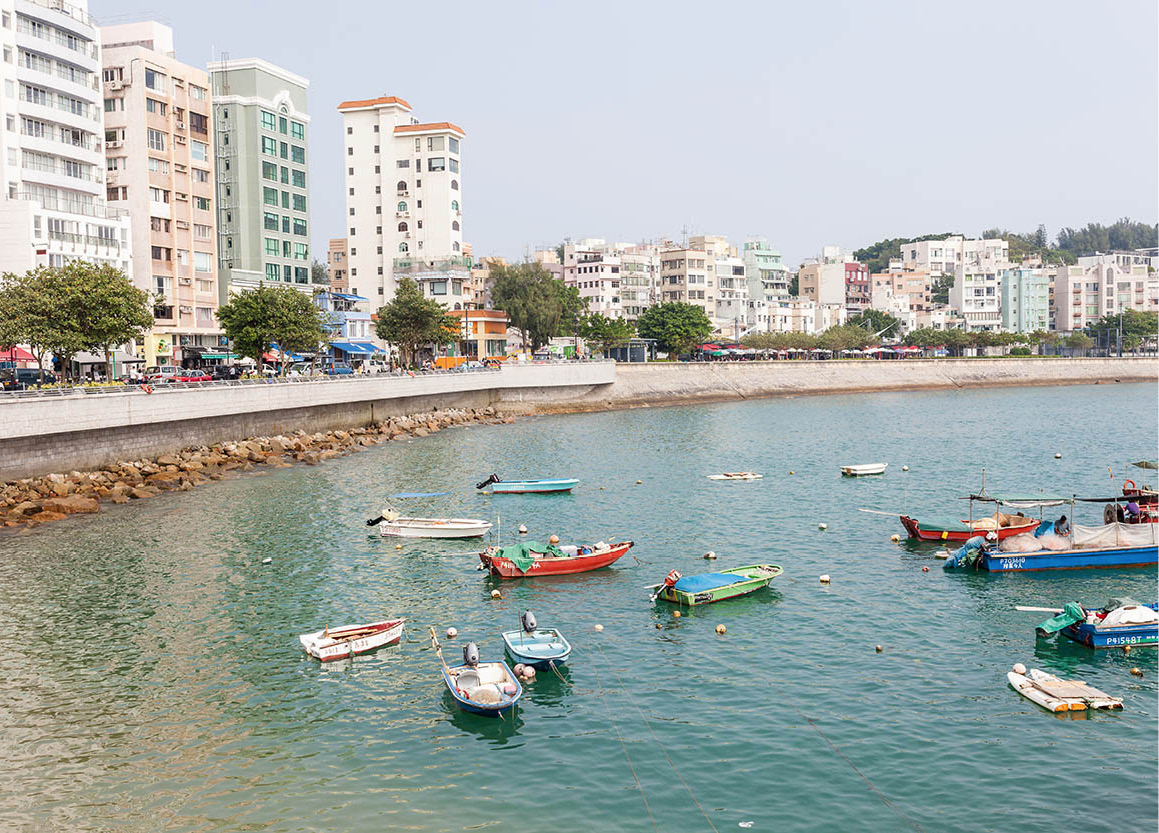
Shops and café’s line Stanley’s waterfront promenade.
Ming Tang-Evans/Apa Publications
Deep Water Bay 4 [map], the first beach beyond Aberdeen and Ocean Park, has some beautiful mansions, and is reputed to enjoy some of the best feng shui in Hong Kong. It also has a nine-hole golf course managed by the Hong Kong Golf Club (open weekdays to the public). Further along the road is the exclusive Hong Kong Country Club. The long stretch of beach here offers a quiet place to soak in the sun or go for a swim.
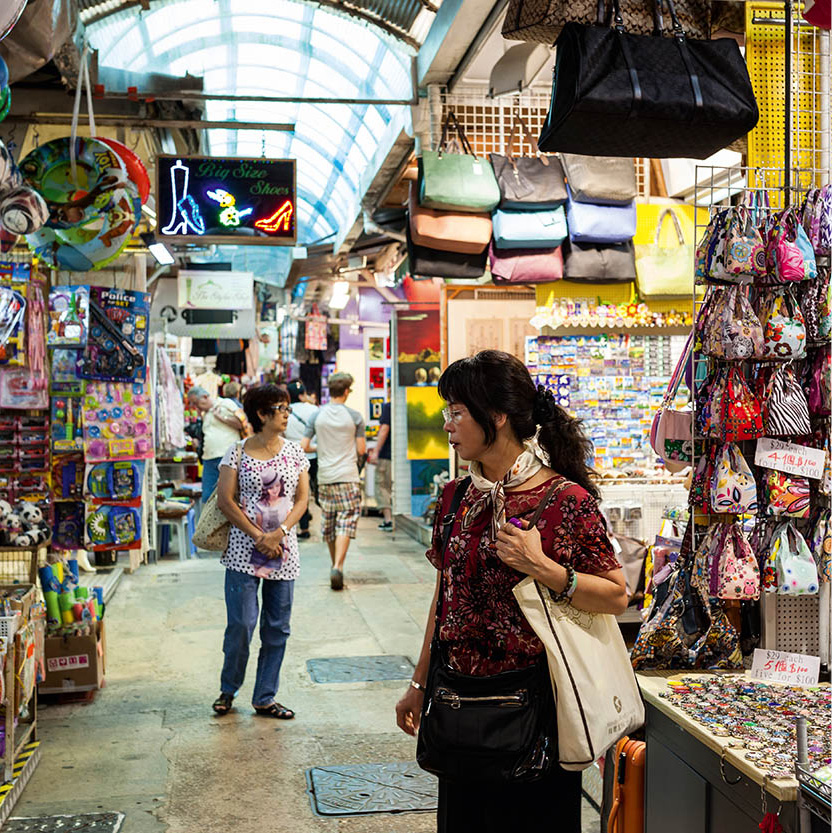
Shopping for bargains at Stanley Market.
Ming Tang-Evans/Apa Publications
Repulse Bay
Repulse Bay (Cheen Soy Wan) 5 [map] is easily identified when you see the apartment block with a square hole in the middle. The bay was named after the battleship HMS Repulse, which took an active part in thwarting pirates who plundered here in the mid-19th century. Now widened to several times its original size and developed into a playground for tourists as well as urban Hong Kongers, Repulse Bay Beach has everything except peace and quiet.
The hills that rise steeply from the shoreline have a sombre history. It was here that invading Japanese troops came pouring down at the end of 1941 during World War II. The Repulse Bay Hotel, once one of the finest hotels in the East, was a military target because British and Canadian troops used it as a base to keep open the road between Stanley and Aberdeen. After three days of fighting, the hotel was taken, and Commonwealth prisoners were marched to Eucliffe Mansion (this folly has also been demolished and replaced by villas), about half a kilometre (1⁄3 mile) from the hotel. Most of the prisoners were executed, and survivors were incarcerated at the Stanley Internment Camp.
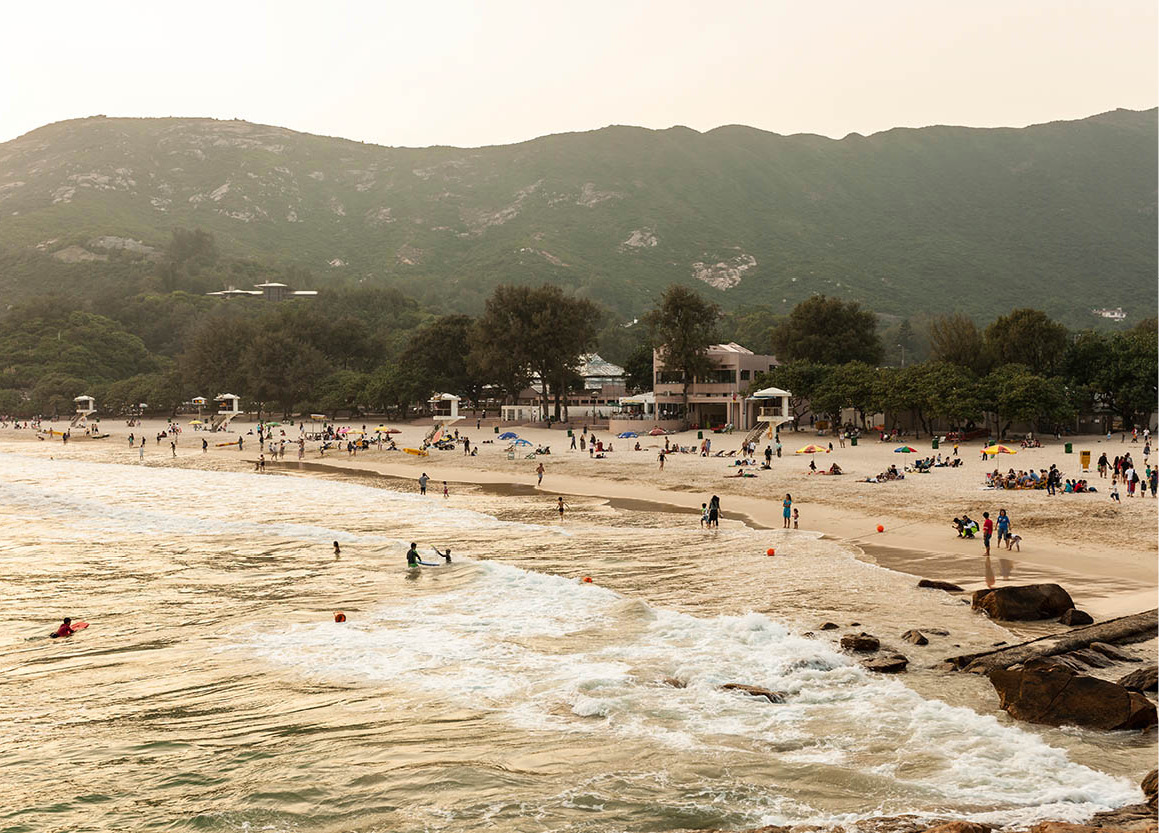
Shek O has one of the best beaches in Hong Kong.
Ming Tang-Evans/Apa Publications
The hotel was also demolished in the 1980s, and on the site today is The Repulse Bay, a luxury apartment complex; it has captured some of the old-world style in its renowned restaurants with verandas overlooking the lawn and beach. The complex includes the famous blue apartment building with the hole in its midst.
Tip
The large blue apartment building with the big square hole in the middle is the best-known sight in Repulse Bay. Some say the hole is a passageway for the heavenly dragon to come down from the mountains; others say it was put there to generate good feng shui; still others say it was just the architect’s attempt at being funky. A replica of the old Repulse Bay Hotel stands in front of the apartment block, preserving a soupcon of grace from days gone by.
Stanley
Fifteen minutes’ drive further southeast is Stanley (Chek Chu) 6 [map], popular with Hong Kong residents for its restaurants and seaside ambience. Named after Lord Stanley, a 19th-century Secretary of State for the Colonies, Stanley was the largest indigenous settlement in Hong Kong when the British first set foot here in 1841. In fact, the local Tin Hau Temple documents that the town was founded in 1770 by the pirate Cheung Po Tsai, who had taken control of the island.
South coast beaches
If the weather’s good and the water’s clear, Hong Kong’s beaches are great places to hang out. A total of 40 of them are gazetted (10 on the south coast of Hong Kong Island), which means there are facilities including toilets, showers, changing rooms, barbecue pits – and lifeguards from March to November. The sands are kept clean, but water quality varies dramatically – ratings are posted at lifeguard stations (along with a long list of things you are not allowed to do).
The nearest beach to Central is at Deep Water Bay, while along the coast is the larger, but more crowded, Repulse Bay beach. South Bay (Nam Wan), just below Repulse Bay, has a relaxed beach scene and the best view of the sunset. At weekends DJs at the open-air South Bay Beach Club provide a soundtrack. St Stephen’s is the nicer of Stanley’s two beaches and has a watersports hire centre. The east side of Cape D’Aguilar has the best surf: Big Wave Bay is the place for surfers and has a surf hire shop, while Shek O attracts a mixed group – beach-goers and surfers jostle with boogie boarders, swimmers and inflatables.
What to see in Stanley
Stanley Market (daily 10am–7pm), the principal attraction on Stanley peninsula, draws thousands of visitors at weekends – locals in search of a bargain as well as tourists looking for souvenirs to take home. A few steps from New Street, where the buses stop, is an extensive covered market packed with shops and stalls selling clothes (factory over-runs or seconds), rattan, fresh food, ceramics, budget art, hardware, brass objects, Chinese crafts – in fact, almost anything.
At the end of the open-fronted restaurants and bars along Main Street, which skirts Stanley Main Beach, there is a modern shopping mall, directly opposite one of the SAR’s most impressive architectural projects. Murray House, a former British Army barracks dating from 1848, was moved stone by stone from Central (it was located on the site now occupied by the Bank of China tower) and rebuilt on the waterfront. Until recently it housed the Hong Kong Maritime Museum (since moved to Hong Kong Central Ferry Pier 8) but now has a number of suave restaurants, many of which have sea views.
The Old Police Station
East of the bus terminus is the Old Stanley Police Station, one of 94 declared monuments in Hong Kong. The early British settlers regarded a posting to Stanley Police Station (built in 1859) as highly dangerous. Only a dirt track connected the town to the city of Victoria (now Central), and pirates frequently attacked and robbed the garrison. Stanley was all but abandoned in the 1850s, until the original police station was replaced by the building which stands today. The station is also thought to have been the last point of resistance to the advancing Japanese forces in the Battle of Hong Kong during World War II. On Christmas Day 1941, the town’s commanding officer refused to believe the British had surrendered, and so the town fought on for a day after troops elsewhere had laid down their arms. That this historic building is currently occupied by a supermarket says a great deal about the parlous state of Hong Kong’s heritage.
Tip
If you are travelling direct to Stanley from Central, take the no. 6 bus from Exchange Square, which bypasses the Aberdeen Tunnel. You’ll have the best views from the top deck going over the top along Wong Nai Chung Gap Road. Pass spindly skyscrapers appearing precariously balanced on the hillside, and enjoy the inexpensive white-knuckle ride down to Repulse Bay and Stanley.
Other sights
Down the road is Stanley Prison, which is still in use, while the two-storey building topped with a mock guard tower next to its parade ground houses the quirky Correctional Services Museum (Tue–Sun 10am–5pm; free). Its nine galleries chart the history of Hong Kong’s penal system, with creepy exhibits like a mock gallows and fake cells. It was also in Stanley Prison and at nearby St Stephen’s College that the Japanese interned 2,800 non-Chinese civilian men, women and children.
To the right of the prison is the Stanley Military Cemetery, where tombstones commemorate early colonial military families, as well as those who died during World War II at the Battle of Hong Kong or at Stanley Internment Camp. Near the cemetery is St Stephen’s Beach, with a watersports centre that hires out sailing dinghies, windsurfing boards and kayaks if you can produce the appropriate certificate.
Beyond Stanley
From Stanley you can reach two country parks with access to more remote beaches, or take on a stage or two of the Wilson, Hong Kong or Tai Tam trails and hike to some of the least visited spots on the island.
To reach Tai Tam Country Park, head north along Tai Tam Road towards the Tai Tam Reservoirs 7 [map], which feature Victorian aqueducts and dams. Made up of four reservoirs, Tai Tam can only meet Hong Kong’s needs for three days (most of Hong Kong’s water supply is piped in from China). The Park covers fully one-fifth of Hong Kong Island, and the reservoirs are a popular picnic spot. The well-marked walk up along the Hong Kong Trail to the north leads past pretty woodland and waterfalls; during the week it’s most likely to be deserted. At the top, a newly developed trail around Wong Nai Chung Gap traces the events of the Battle of Hong Kong in 1941.
Following Tai Tam Road, then Shek O Road, around Tai Tam Bay will take you to the east coast of Hong Kong Island, where Big Wave Bay’s consistent surf and easily accessible location is a big draw for the Hong Kong surfing community. Boards and suits can be rented from the Surf 360 shop, just off the beach.
Just to the south, Shek O 8 [map] is a pleasant village whose market place has a collection of shops selling beach paraphernalia. There are also some laid-back restaurants well known for both Chinese and Thai cuisine. Stroll out to Shek O Headland, facing the islands of Tai Tau Chau and Ng Fan Chau, and to the right is the most easterly point of the island, Cape D’Aguilar.
Alternatively, take it all in by walking along the Dragon’s Back from the trail marker above To Tei Wan to Shek O (stage 8 of the Hong Kong Trail), which takes hikers along ridges around these peaks for two or three hours before dropping down to Big Wave Bay.